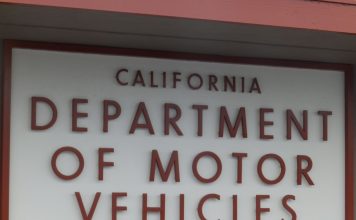The Gilroy City Council on Monday, May 8 held a study session on Gilroy’s five-year Capital Improvement Plan. Nearly $23 million in projects—28 in all—were presented by city staff for review. Projects ranged from one-off items including demolishing city-owned property on Dowdy Street to ongoing work like city-wide sewer repair and rehabilitation.
City engineer, David Stubchaer told the council that projects were driven by grant opportunities, regulatory compliance issues and City Council priorities and development agreements.
To pay for the projects, city staff identified 16 funding sources for a total of $22,555,422. Money would come from fees paid by developers, grants, monies distributed by the state like the gas tax and vehicle license fee and other city funds. Nearly $300,000 in general fund monies were included.
During the study session a few of the projects were questioned by city councilmembers.
They included: a new fire truck to replace one that has spent nine weeks in the repair shop over the last year, new HVAC system and backup generator for City Hall, and proposed roundabout for Wren and Welburn Streets.
Staff said the $700,000 allocated for a replacement fire truck was not technically a CIP project, but due to the amount and necessity it was included in the budget.
A new backup generator for City Hall was recently put on the list after the existing one blew up a couple months ago. Councilmembers Dan Harney and Dion Bracco argued that if the generator needs to be replaced it should be replaced and listed as a general operating expense—not a capital improvement.
Harney was also uncomfortable with the $1 million budgeted cost of a new HVAC replacement for city hall as staff said it was based on an estimate from Los Altos when they replaced their air conditioning unit.
A proposed roundabout at Wren and Welburn also raised eyebrows. Interim public works director Glenn Roberts said a roundabout at that intersection may require more space than is publicly available.
“It may be unfeasible due to physical limitations,” said Roberts.
Harney wanted to know why the city would pursue a roundabout if staff thinks it’s a no-go from the start.
Roberts said changing the plan to a traditional traffic signal would have to be approved by city council. The estimated $500,000 project would be funded by the city’s Traffic Impact Fund.
During public comments, Zachery Hilton of the Bike and Pedestrian Commission submitted three projects for consideration—a new BMX track at the Gilroy Sports Complex, bike racks and bike storage facilities downtown, and Gourmet Alley pedestrian improvements.
All three projects, he said later, could be grant-funded at least in part and adhered to the strategic goals identified by the City Council earlier this year.
“We took a lot of time and got public feedback to develop that list,” said Hilton. “We did outreach and aligned them to their [City Council’s] strategic plan—and all three of those items have all come up before and never been implemented. They are not new ideas.”
City administrator Gabe Gonzalez told the council a memo would be drafted on the BMX track item and all three projects would come back to council for further discussion on May 22 when the council will hold another study session on the full budget—operations and capital improvements.
Downtown property owner Gary Walton asked the council to consider hiring local contractors for all the construction work proposed and instead of demolishing the house at 7389 Dowdy St., to offer it to another party.
“Someone may take that house; it would be a waste to demolish it,” he said.
As the president of the Downtown Business Association, Walton liked that wayfinding signs were on the list, but added that signs directing people to free parking downtown need to be included.
In regard to two other items on the capital improvement list—maintain city signs and markings and Monterey Street pavement and streetscape, which were estimated at $504,001 and $1,336,400 respectively, Walton said remarking downtown crosswalks should be prioritized as well as improving the look to the city’s entry points.
“The gateways are so bad. First impressions are really important,” he said.
Walton also mentioned that if the city wanted to improve Gilroy’s pavement condition—the CIP budgeted just over $6 million for capital pavement maintenance—planting trees was the way to go.
“If you had a canopy of trees your pavement would last longer,” he said.
At one point during the three-hour study session, Harney asked city staff if they had consulted with any of the city commissions to review the CIP list of 28 mostly infrastructure-related projects, and were given the opportunity to submit projects of their own.
According to staff and later confirmed by commissioner Tom Fischer, the Planning Commission reviewed four items on the list to ensure they were in compliance with the city’s general plan, as per the city charter.
“We only reviewed four items on the list this year, the equipment purchases we don’t have to—they are maintenance—and we reviewed other items in the past,” he said.
Fischer, who has served on the Planning Commission for six years and ran for city council in November, said the Commission was not asked to submit projects for consideration but thinks there should be a way for the volunteer-run bodies to do so.
“I think as a citizen we should be able to bring things to the city in the way of capital improvements,” he said. One way commissions could participate, Ashcroft suggested, was to submit project ideas during their annual report, or anytime throughout the year.
One hangup, however, is commissioners not knowing what their roles and responsibilities are when it comes to forwarding project ideas.
“We review projects all the time, but when you have a CIP plan or budget you are on a little less sure footing on what your role is. You rely on staff to say what your responsibilities are,” he said.
Hilton agrees that there really isn’t any formal opportunity for commissions to make project recommendations to council—and the role of city commissions is to make recommendations to the policy making body.
What he recommends other commissions do is what the Bike and Pedestrian Commission has undertaken—draft a strategic plan.
“Each commission should have a strategic plan that they can adopt as a group—we have ours in draft right now which we will then show to the general public,” said Hilton. “On the plan you have what your mission is, goals, priorities and projects that you are working on. During [city] budget [discussions] is the only time you will have the opportunity to get them on.”
The bike and pedestrian commission projects, along with those listed in the CIP will return for further discussion on May 22, when the City Council holds another study session on the city budget. The talks will include information on how the 28 capital projects fit with the city council’s strategic goals and review of the city’s operation’s budget. A final two-year city budget is set to be adopted at the City Council meeting on June 5.












